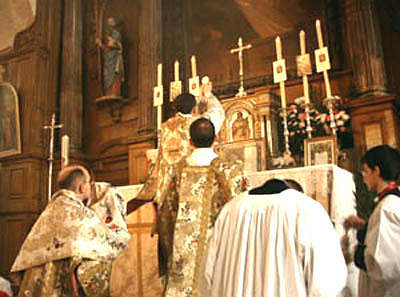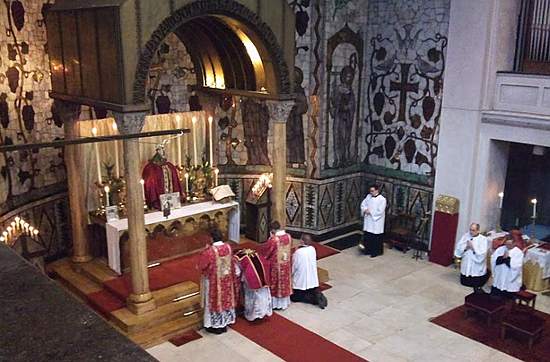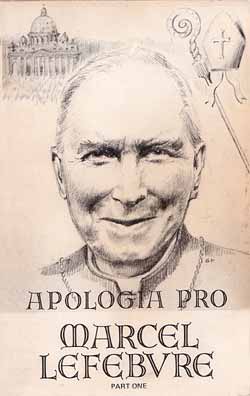Vatikanet og tradisjonalister
John Allen skriver i dag om to dokumenter som kan utgis i Vatikanet i april – ett om den tradisjonelle messen og ett om forholdet til SSPX) – som Vatikanet mener bør glede tradisjonalister (av alle avskygninger, både de moderate og SSPX), men som sannsynligvis ikke vil være godt nok for alle.
… the instruction will confirm that the moto proprio is now the universal law of the church, and insist that bishops apply it. Among other things, it will call for seminarians to be trained not just in Latin, but in the older rite itself, at least so they will know how to execute it faithfully and understand what’s being said.
The instruction will also confirm that the older Mass must be available wherever “groups of faithful” request it, without specifying how many people it takes to constitute a “group.”
The instruction will likewise confirm that the older liturgy is to be celebrated during Holy Week wherever there’s a “stable group” of faithful attached to it, as well as in religious orders which use the extraordinary rite.
On the other hand, the instruction will probably not satisfy all traditionalist hopes. For example, it will probably not give a seminarian in a regular diocesan seminary the right to be ordained according to the pre-Vatican II ritual, in part because that ritual presumes ordination to “minor orders” and the sub-diaconate, which were suppressed under Pope Paul VI.
As far as the talks with the Society of St. Pius X go, signs suggest they may end with a whimper rather than a bang. …
Les hele artikkelen her.

 Vi var i Roma sist lørsdag (19/3) fram til kl 14, men visste ikke om denne messen i Pantheon (Santa Maria ad Martyres).
Vi var i Roma sist lørsdag (19/3) fram til kl 14, men visste ikke om denne messen i Pantheon (Santa Maria ad Martyres). 

 På flyturen ned til Kanariøyene og i løpet av et par formiddager her nede har jeg lest boka:Apologia pro Marcel Lefebvre av Michael Davies (som
På flyturen ned til Kanariøyene og i løpet av et par formiddager her nede har jeg lest boka:Apologia pro Marcel Lefebvre av Michael Davies (som